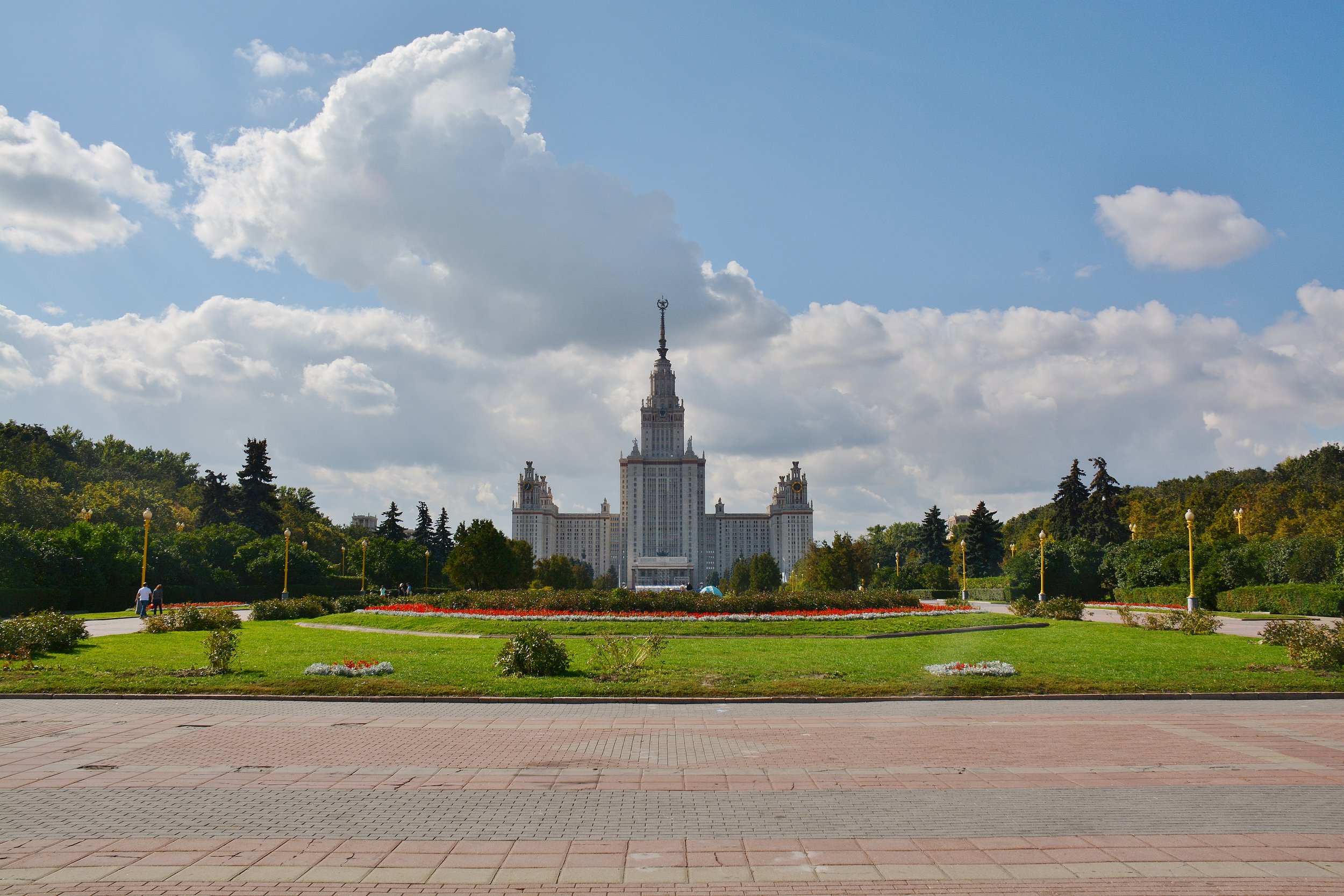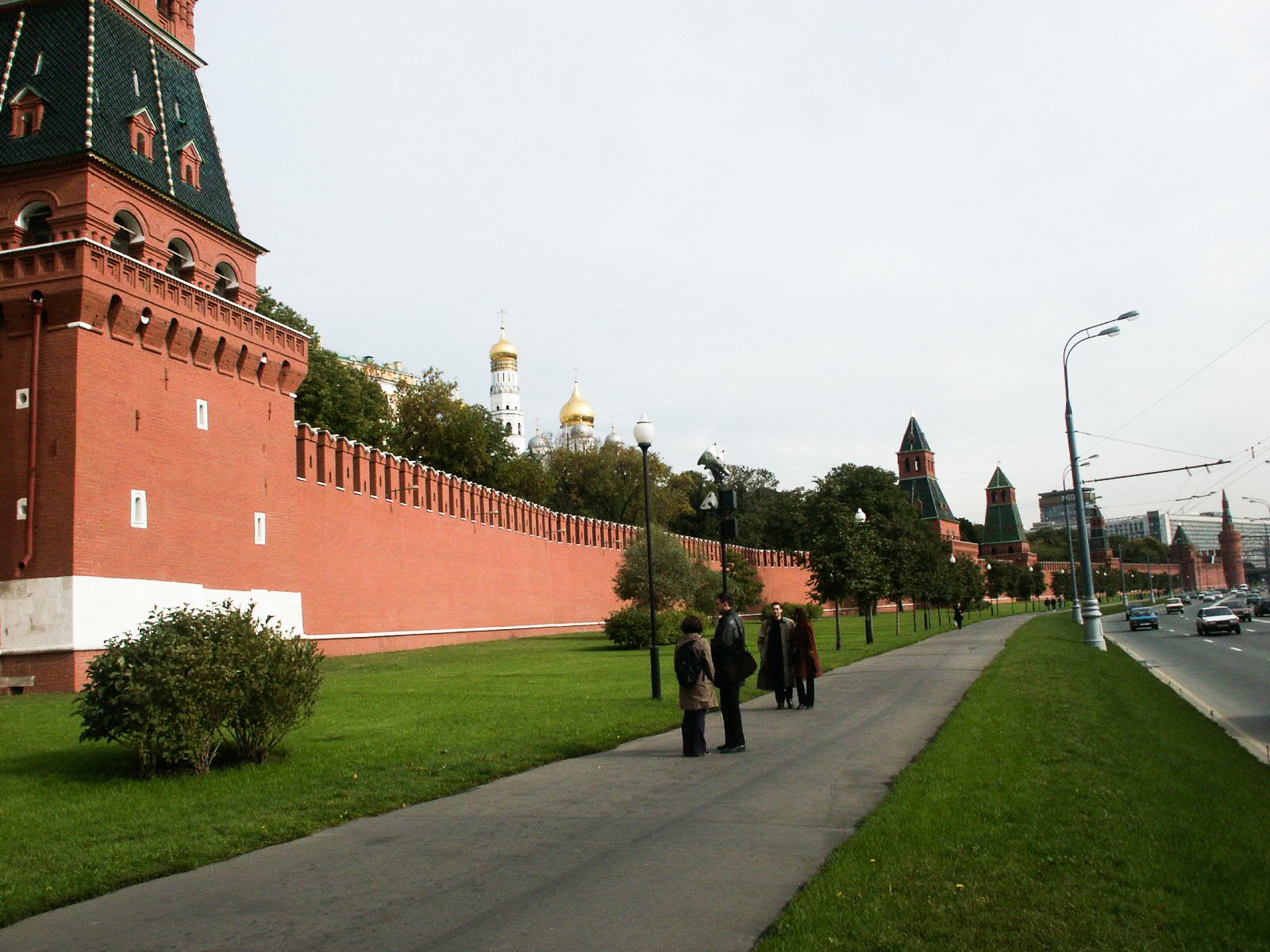MOSCOW
My favorite Russia photo shows the main entrance to Red Square. The gray overcast sky sets the mood but is contrasted by St. Basil’s colorful and popular Cathedral on the left and Lenin’s dour tomb on the right.
This image features Lenin’s tomb with its large balcony Russia’s leaders have long stood here to speak in conjunction with major events and military parades demonstrating Russian power and discipline.
GUM is an immense shopping mall (almost 800 feet long and on two levels) It is located directly across Red Square from Lenin’s tomb.
Moscow State University is one of Russia’s most prestigious centers of higher learning. Established in 1755, it has 47,000 students and 5, 000 academic staff members.
This walkway adjacent to the Kremlin wall is across a roadway from the Moscow river.
The Kremlin Wall and Grand Kremlin Palace. The Palace has long been the official residence of the Tsar and, more recently, the working residence of the President. It was always intended to represent the greatness of the Russian autocracy. It also houses a large and impressive museum. To its right are the five Orthodox churches and Cathedral of the Kremlin.
The Moscow metro serves more than seven million people daily. It was opened in 1935 and is world famous for its beautiful stations. Its extraordinary depth allows it to also serve as a bomb shelter.
Moscow’s Museum of the Great Patriotic War is more than 14 thousand square meters of exhibit space celebrating Russia’s victory in that war. It also serves as a memorial for Russia’s 8.8 to 12.7 million military deaths. U.S. military deaths were 405,000.
Moscow’s Cathedral of Christ the Saviour is immense with seating for 7,500. Its predecessor cathedral celebrated Russia’s victory over Napoleon. The current cathedral, consecrated in 2000, replaced the earlier cathedral that Stalin had dynamited in 1935.
Yeliseev’s Emporium (grocery store) opened in 1901 on Moscow’s Tverskaya Street, a couple blocks from Red Square. It displayed a grand presentation of rare delicacies including its caviar. It closed after 120 years because of Covid. Hopefully, it will be restored.
From 1923 to 1926 Felix Dzerzhinsky, a Bolshevik revolutionary headed Russia’s Cheka and OGPU. Both were predecessors to the KGB and FSB and both were Soviet secret police organizations that inaugurated Russia’s brutal campaigns of Red Terror. Dzerzhinsky’s bronze statue, which stood in Lubyanka Square in front of KGB/FSB headquarters was removed to the Fallen Monument Park in 1991. It has since become a source of controversy because of its prospective restoration.
ST. PETERSBURG
In 1985, the Summer Palace (Peterhof) outside St Petersburg, was still in its early restoration 40 years after the end of WWII when Joyce and I first visited Russia. Today it is marvelous with its extensive palaces and gardens.
The approach to The Special Treasury, a building is adjacent to the Summer Palace and Peter’s Monplaisir Palace.
Tsarskoe Selo Palace (also known as Catherine Palace) is directly south of St Petersburg. It is beautiful and was briefly the home of Catherine, Peter’s 2nd wife and Empress-regent. Later it was home to Catherine the Great who made significant additions to the palace.
The Bronze Horseman (an equestrian statue of Peter the Great on horseback), was commissioned by Catherine the Great, reportedly to gain favor with the Russian people because her heritage was German.
Peter and Paul Fortress in St Petersburg was commissioned by Peter the Great sometime after 1703. It’s Peter and Paul Cathedral serves as the final resting place for Peter the Great and almost all of his successors through Nicholas II.
The interior of Peter and Paul Cathedral
Peter the Great’s final resting place in the Cathedral
VLADIMIR
The Church of the Intercession on the Nerl is a simple but famous cathedral and World Heritage site. It is located eight miles from the ancient capital city of Vladimir. The church is considered a major symbol of medieval Russia



















